Abstract
Serial ova count studies were conducted to determine some of the characteristics of the spring rise in faecal shedding of nematode ova by parasitized sheep in flocks in the Montreal area. It was discovered that substantial spring rises occurred in most ewes following their lambing but that great variation existed in the magnitude, duration, and pattern of the rises. Although rams did not display increased ova counts, a slight but well-defined rise developed in one unbred ewe.
Larval studies in ewes parasitized by a variety of nematode species, revealed that Haemonchus contortus was the major contributor to the spring rise in faecal ova output.
Preparturient treatment of ewes with thiabendazole1, at the rate of 100 mg./kg. of body weight, suppressed spring rise but failed to arrest completely the faecal shedding of nematode ova.
Full text
PDF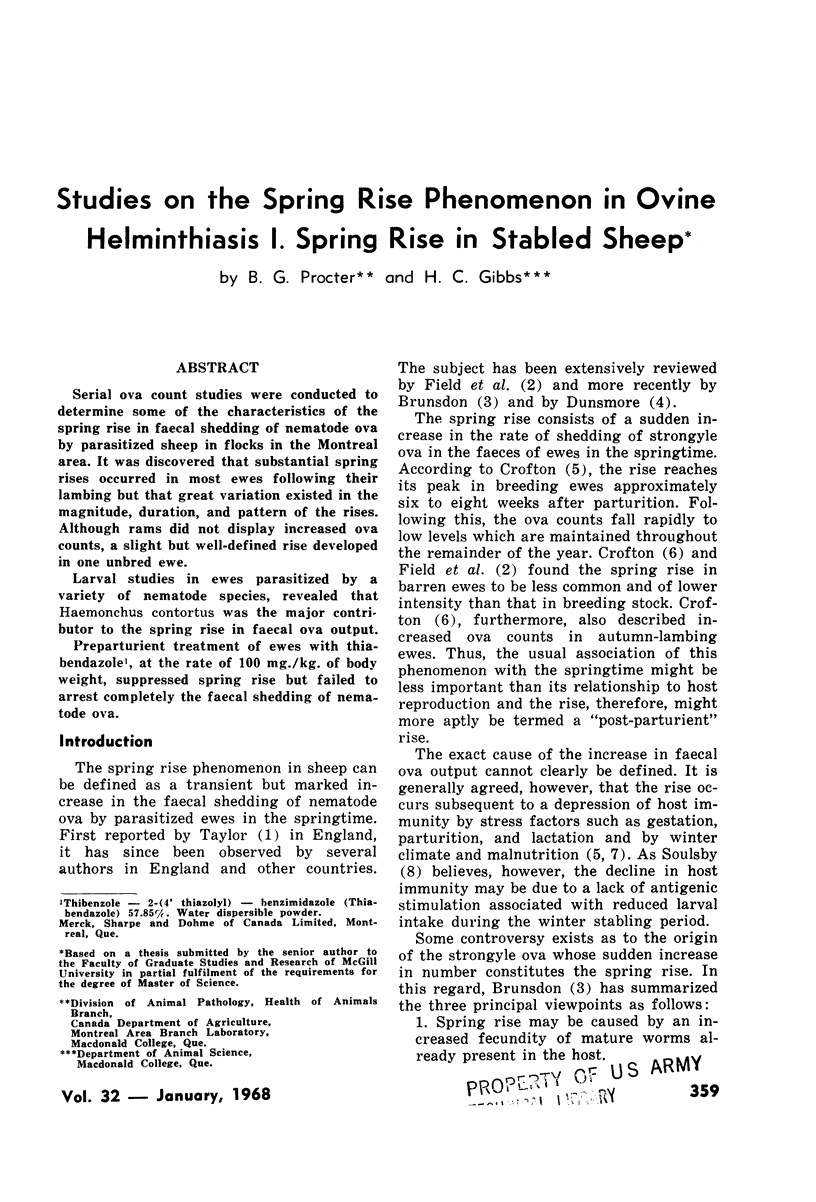
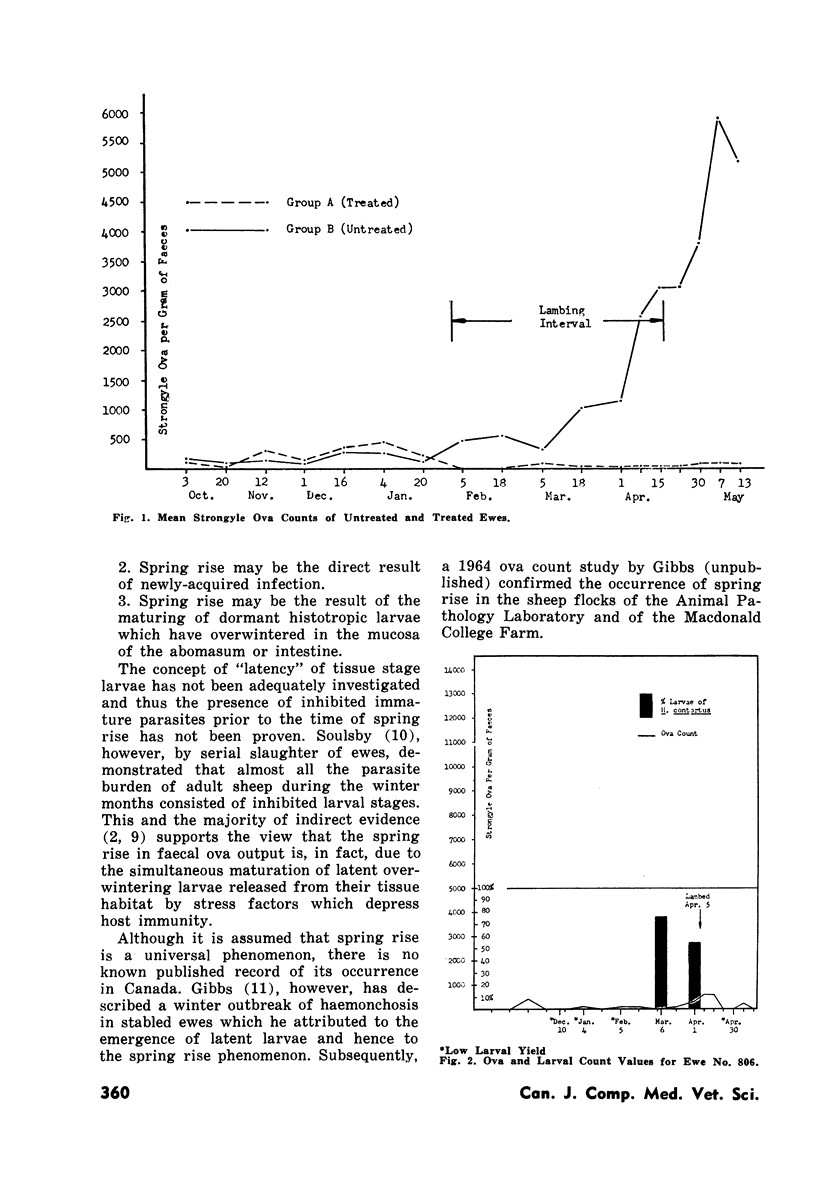
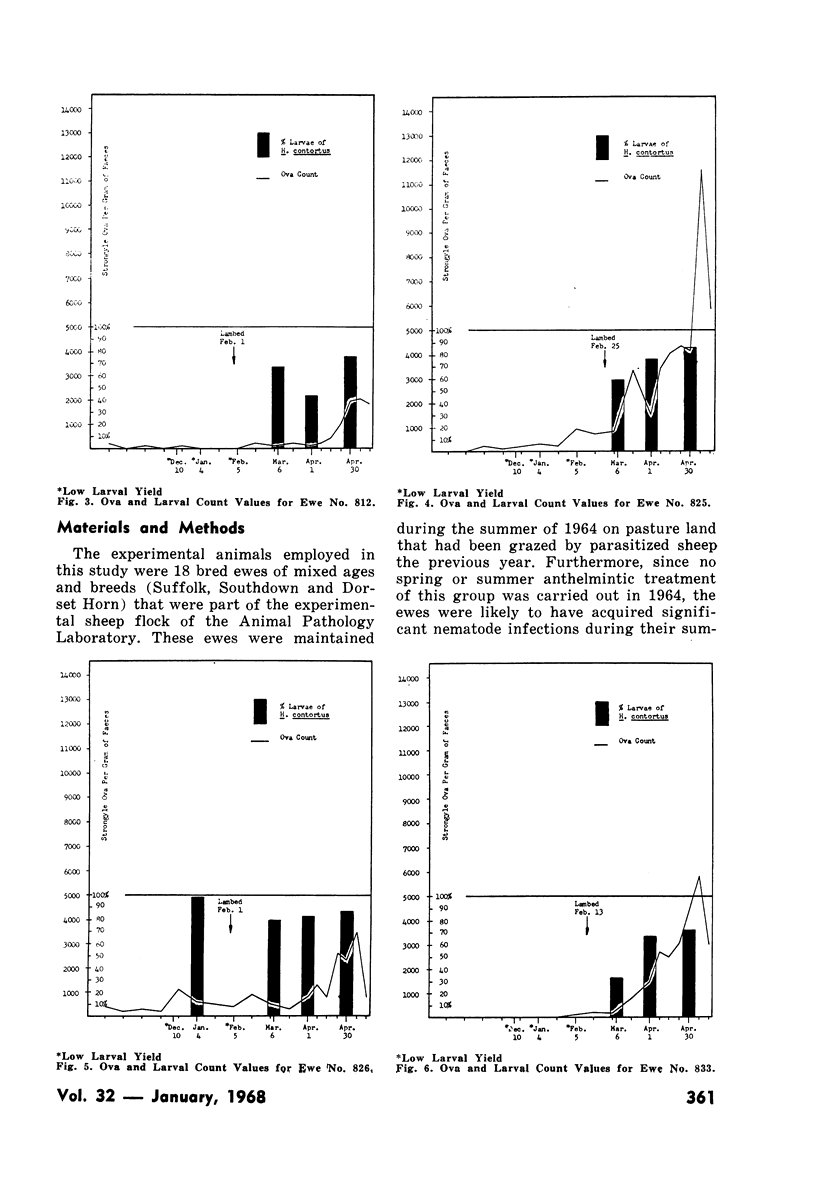
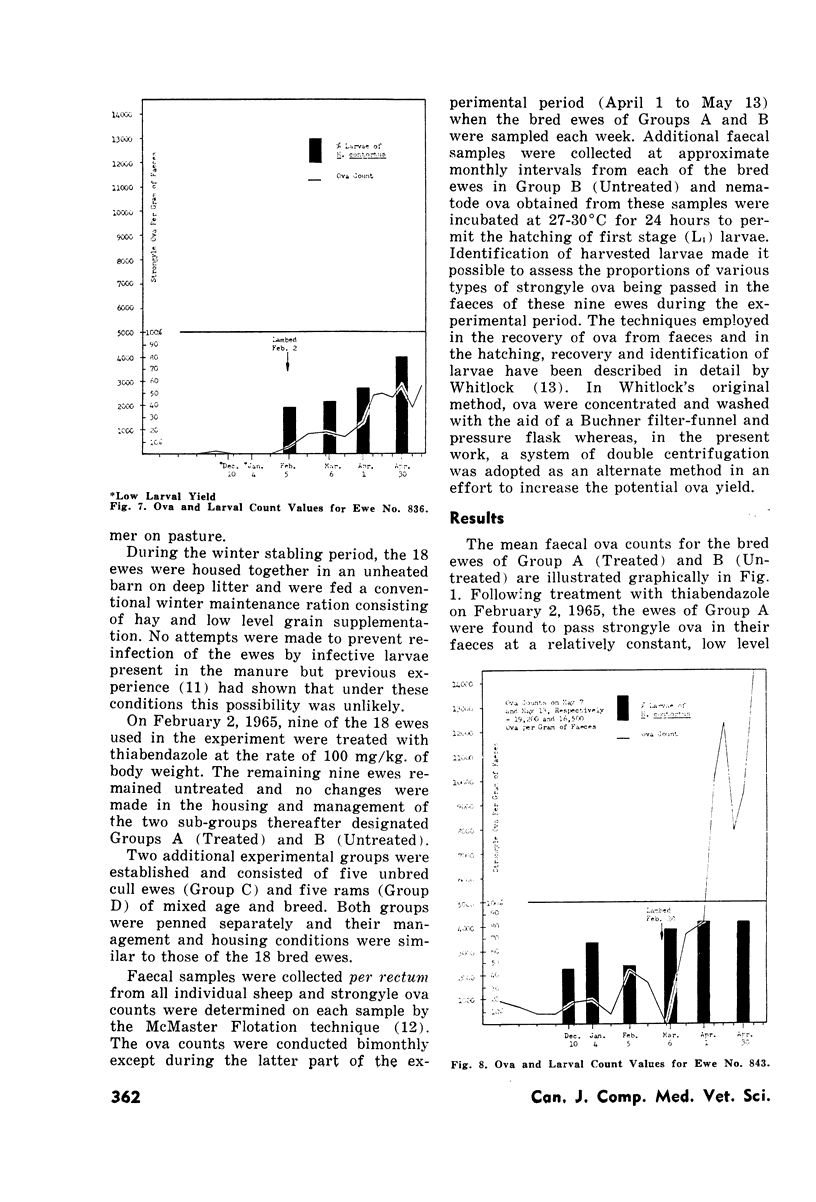
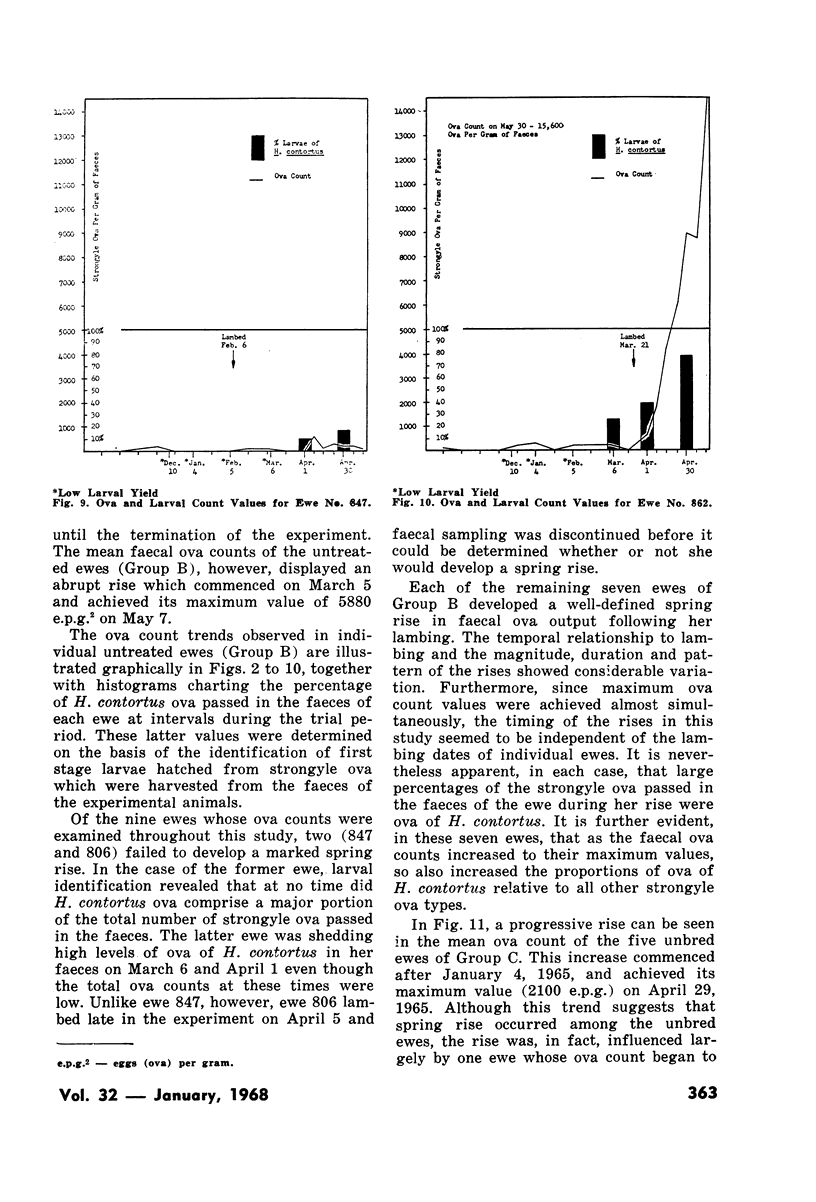
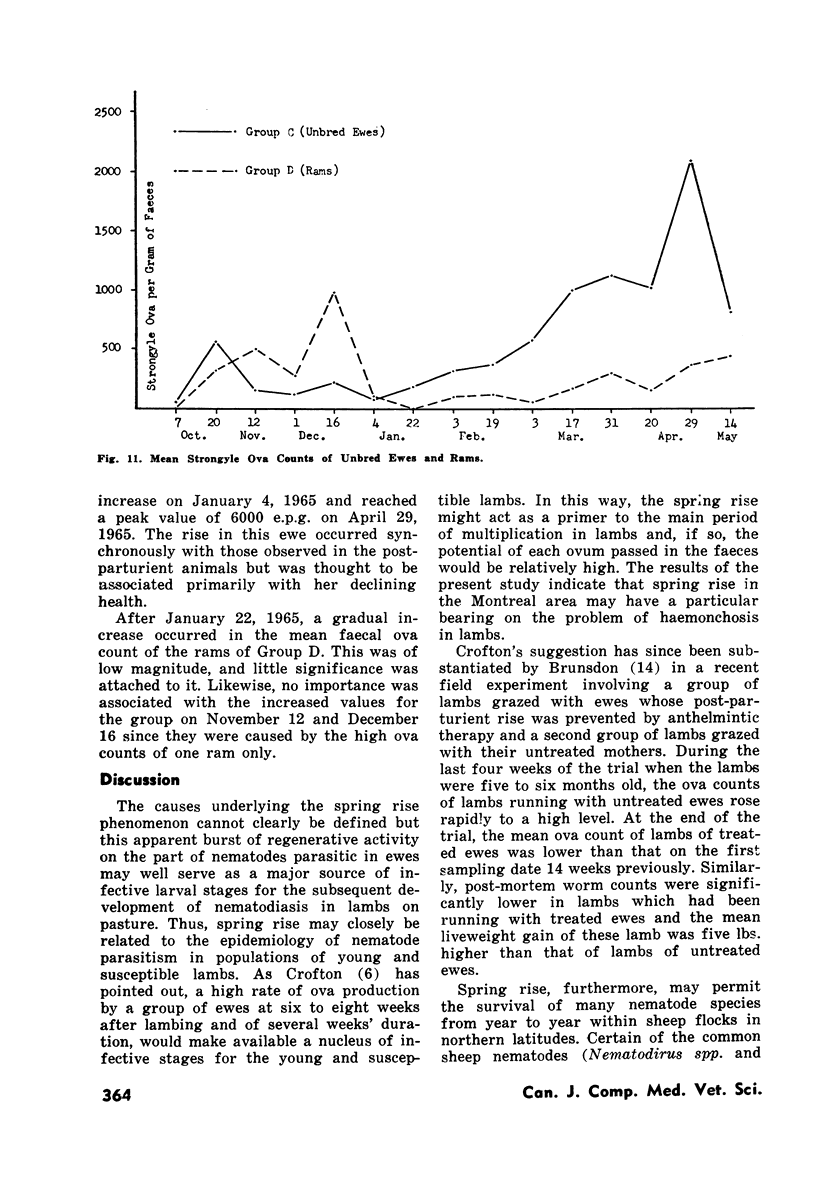
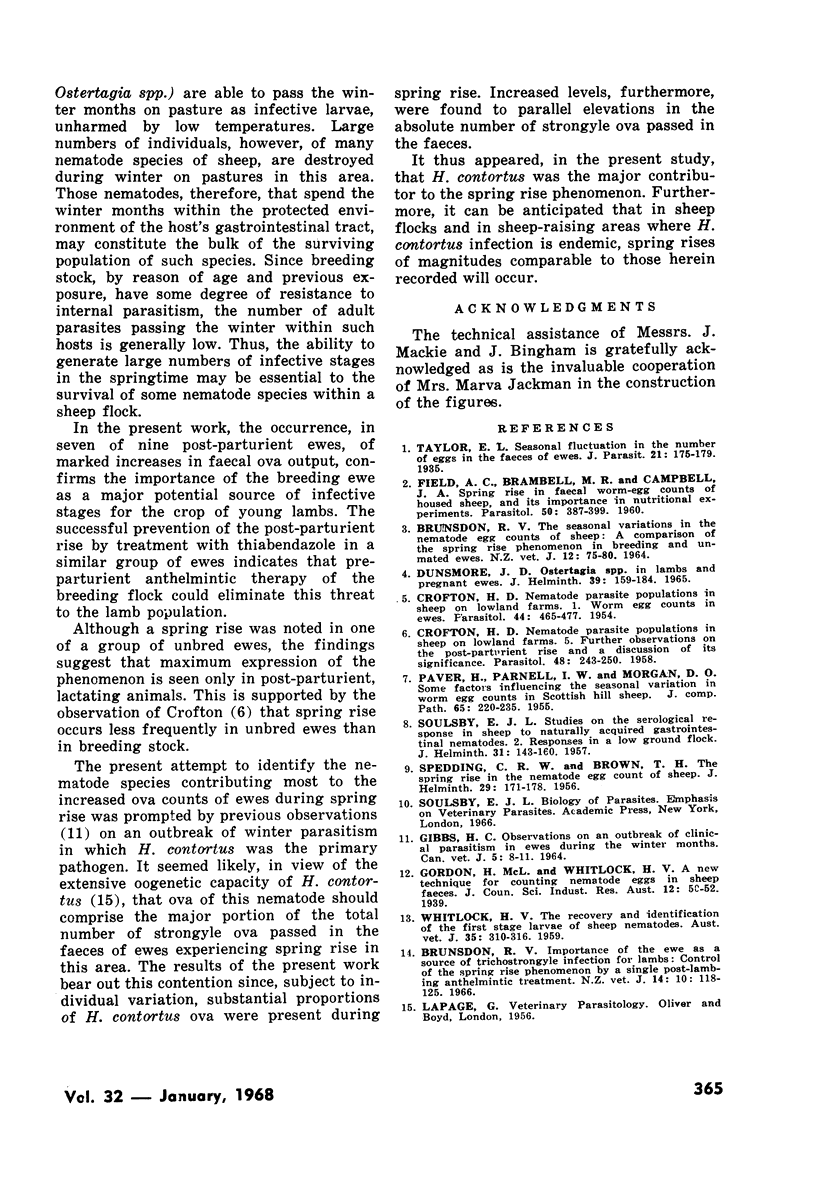
Selected References
These references are in PubMed. This may not be the complete list of references from this article.
- Brunsdon R. V. Importance of the ewe as a source of trichostrongyle infection for lambs: control of the spring-rise phenomenon by a single post-lambing anthelmintic treatment. N Z Vet J. 1966 Aug;14(8):118–125. doi: 10.1080/00480169.1966.33649. [DOI] [PubMed] [Google Scholar]
- CROFTON H. D. Nematode parasite populations in sheep on lowland farms. 1. Worm egg counts in ewes. Parasitology. 1954 Nov;44(3-4):465–477. doi: 10.1017/s0031182000019144. [DOI] [PubMed] [Google Scholar]
- CROFTON H. D. Nematode parasite populations in sheep on lowland farms. V. Further observations on the post-parturient rise and a discussion of its significance. Parasitology. 1958 Nov;48(3-4):243–250. doi: 10.1017/s0031182000021211. [DOI] [PubMed] [Google Scholar]
- Dunsmore J. D. Ostertagia spp. in lambs and pregnant ewes. J Helminthol. 1965;39(2):159–184. doi: 10.1017/s0022149x00020575. [DOI] [PubMed] [Google Scholar]
- FIELD A. C., BRAMBELL M. R., CAMPBELL J. A. Spring rise in faecal worm-egg counts of housed sheep, and its importance in nutritional experiments. Parasitology. 1960 Nov;50:387–399. doi: 10.1017/s0031182000025476. [DOI] [PubMed] [Google Scholar]
- Gibbs H. C. Observations on an Outbreak of Clinical Parasitism in Ewes During the Winter Months. Can Vet J. 1964 Jan;5(1):8–11. [PMC free article] [PubMed] [Google Scholar]
- PAVER H., PARNELL I. W., MORGAN D. O. Some factors influencing the seasonal variation in worm egg counts in Scottish hill sheep. J Comp Pathol. 1955 Jul;65(3):220–235. doi: 10.1016/s0368-1742(55)80019-7. [DOI] [PubMed] [Google Scholar]
- SOULSBY E. J. Studies on the seriological response in sheep to naturally acquired gastro-intestinal nematodes. II. Responses in a low ground flock. J Helminthol. 1957;31(3):145–160. doi: 10.1017/s0022149x00004387. [DOI] [PubMed] [Google Scholar]


